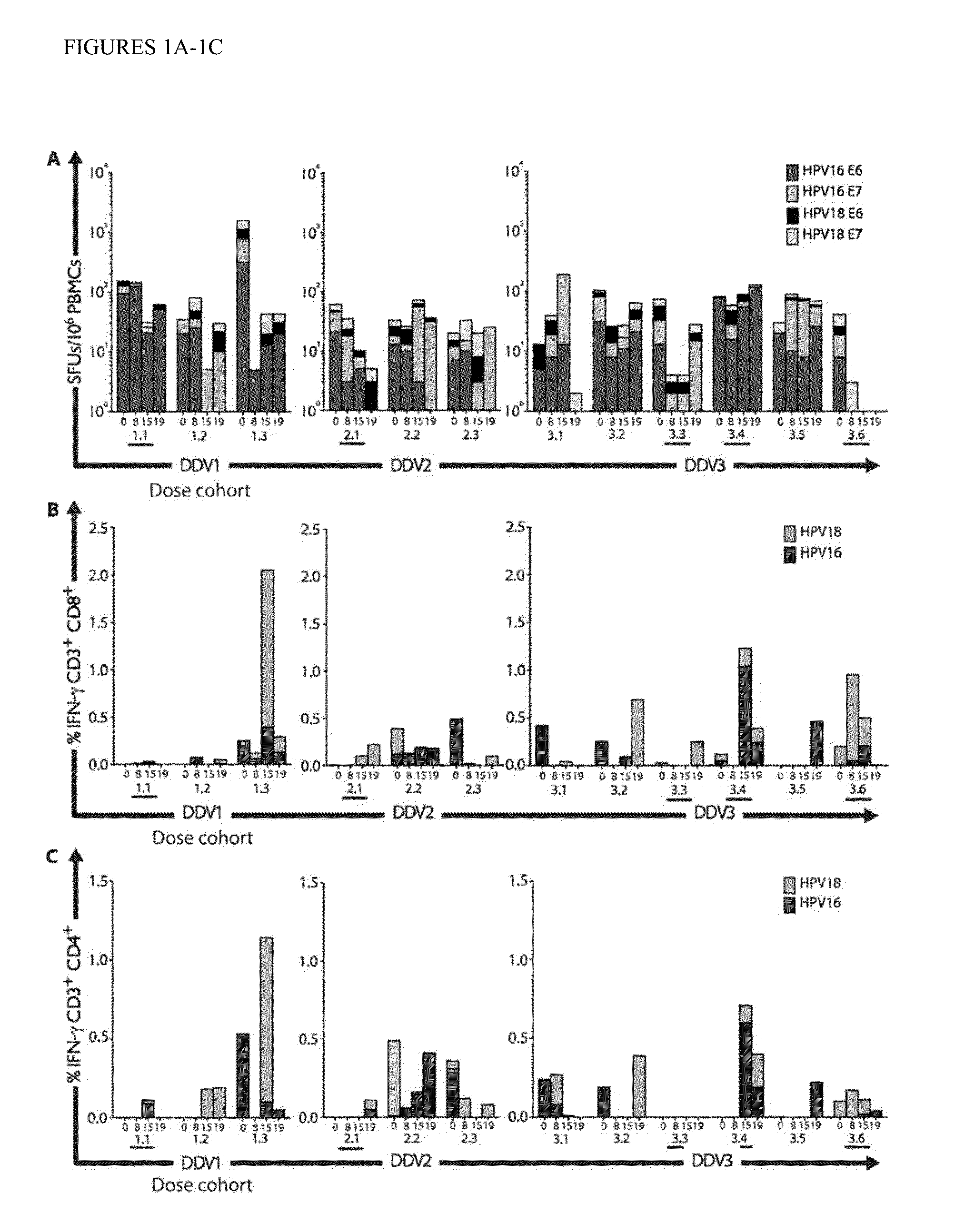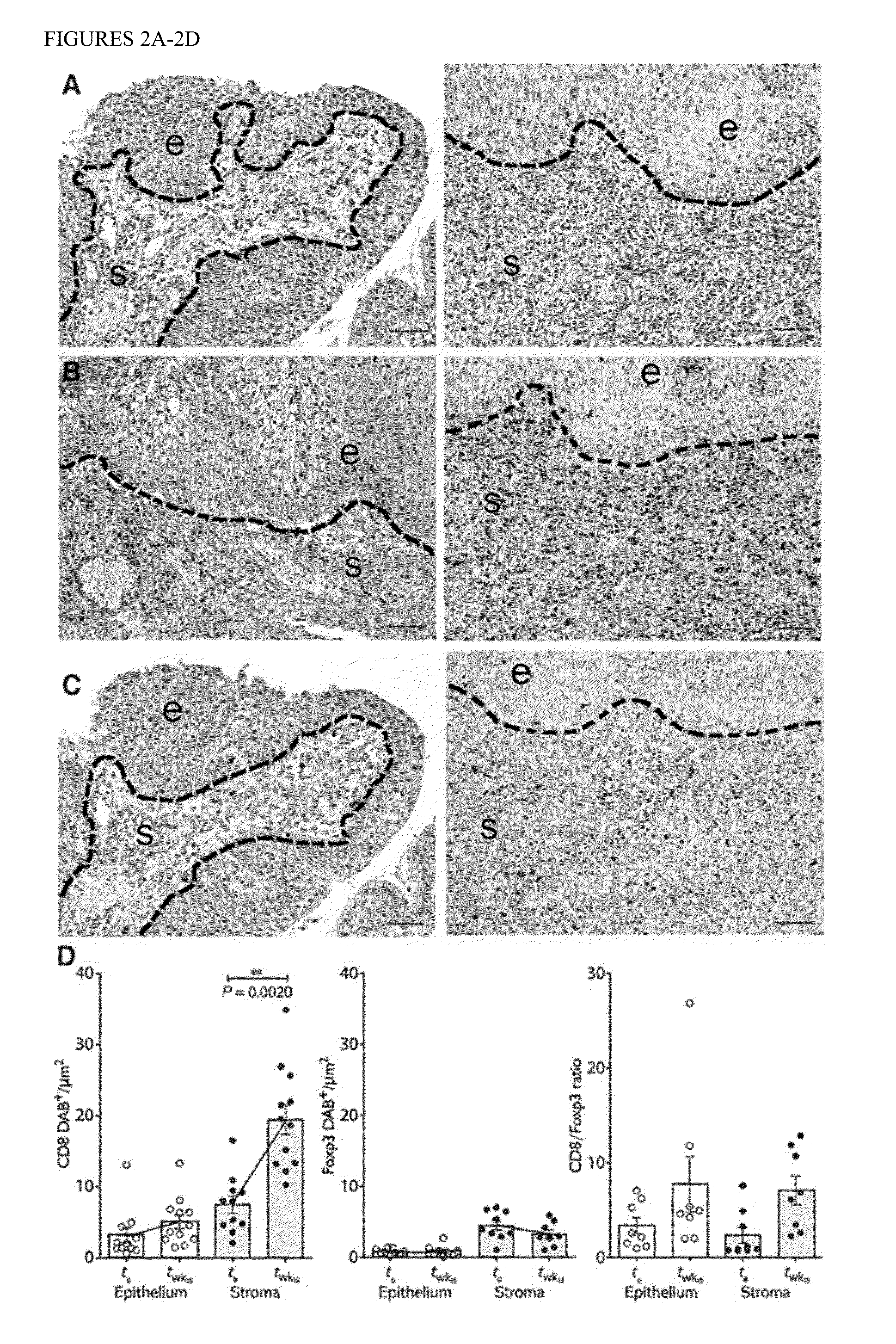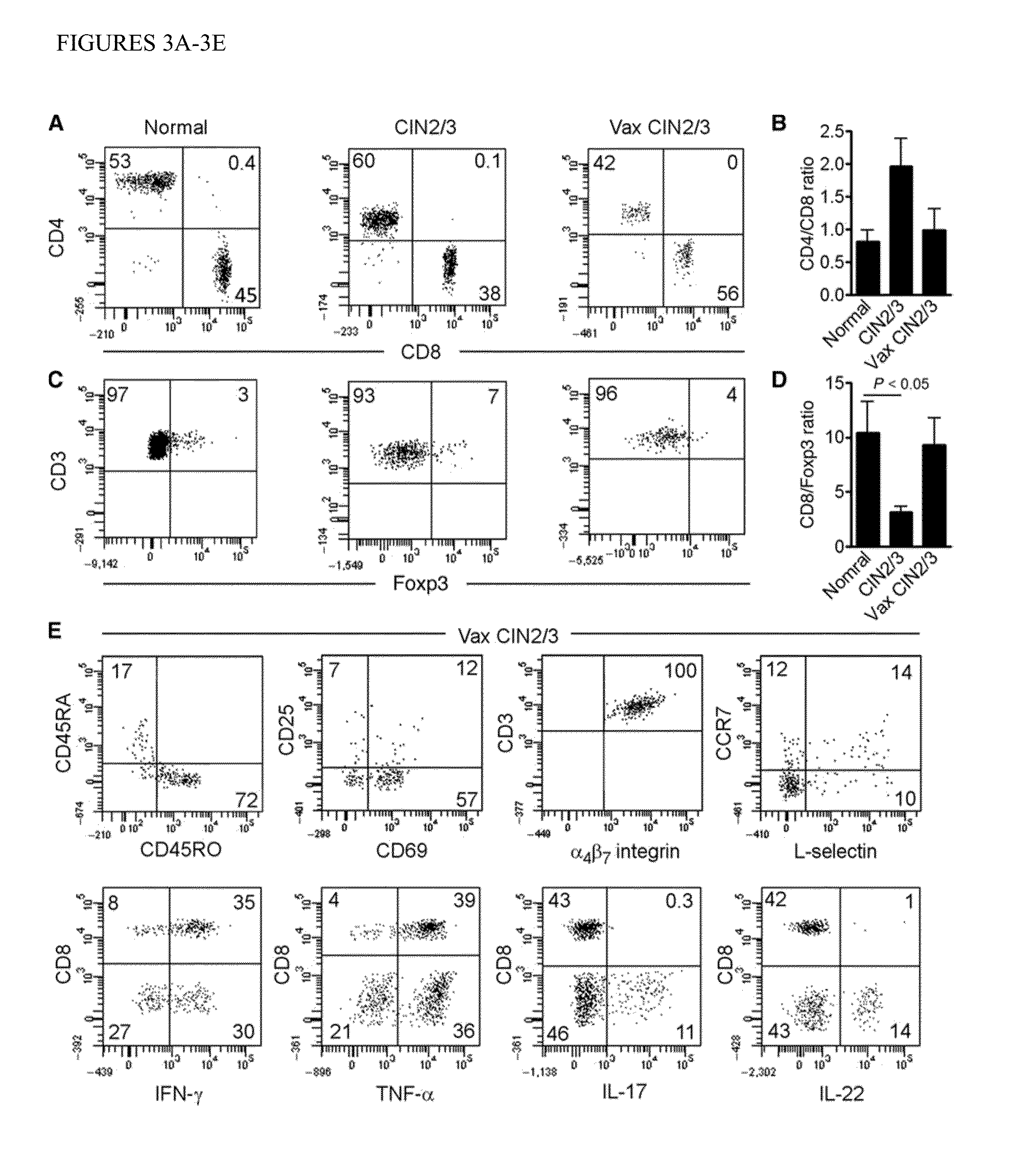Biomarkers of immune response in mucosal lesions and their use with therapeutic vaccination
- Summary
- Abstract
- Description
- Claims
- Application Information
AI Technical Summary
Benefits of technology
Problems solved by technology
Method used
Image
Examples
example 1
[0098]Heterologous prime-boost vaccination targeting HPV16 E6 / E7 is safe and tolerable in subjects with HPV16+ CIN2 / 3 lesions.
[0099]Healthy subjects with HPV 16-associated CIN2 / 3 underwent peripheral vaccination with a heterologous DNA prime-recombinant vaccinia vector-based boost vaccination regimen administered intramuscularly in the deltoid muscle before a standard therapeutic resection. The regimen included two priming vaccinations with a DNA vaccine expressing HPV16 E7 (DNAE7) at study weeks 0 and 4, followed by a recombinant vaccinia boost expressing HPV16 and HPV18 E6 and E7 (rVacE6E7; TA-HPV) at study week 8. At week 15, 7 weeks after the boost vaccination, subjects underwent a standard therapeutic resection of the cervical squamocolumnar junction. A total of 12 patients in three treatment arms were evaluated (Table 1).
[0100]Demographics are presented in Table 2. All subjects received 3 mg of DNAE7 at entry and at week 4. At week 8, patients received one of three rVacE6E7 do...
example 2
[0101]Therapeutic vaccination elicits HPV-specific cellular immune responses in the blood.
[0102]Standard interferon-γ (IFN-γ) enzyme-linked immunospot (ELISpot) assays (12, 13) were performed to determine the number of antigen-specific IFN-γ-secreting cells in response to stimulation with HPV16 or HPV18 E6 and E7 peptide pools. As shown in FIG. 1, after three vaccinations, one of three subjects who received the low-dose boost vaccination, all three subjects who received the intermediate-dose boost vaccination, and three of six subjects who received the full-dose boost vaccination mounted vaccine-induced HPV16-specific cellular immune responses. Overall, seven subjects (58%) developed cellular immune responses detectable by ELISpot. Peak responses were modest, in the range of 50 to 150 spot-forming units (SFUs) per 106 PBMCs. However, using this assay, increased responses were restricted to HPV16 E7, suggesting that the DNA vaccine, which targeted only the HPV 16 E7 antigen, might in...
example 3
[0104]Tissue CD8+ T cell infiltrates in the target lesion increase after vaccination.
[0105]In unvaccinated persistent CIN2 / 3, we and others have found that tissue T cells are relatively restricted to the stromal compartment immediately subjacent to dysplastic epithelium (11, 14). This pattern of T cell distribution in unvaccinated lesions is consistent with non-antigen-specific recruitment to virally infected mucosa via a chemokine gradient. In contrast, in the post vaccination tissue specimens, the intensity of CD8+ T cell infiltration into lesions increased markedly both in the dysplastic epithelium and in the underlying stromal compartment (P=0.0020) (FIG. 2). These infiltrates were localized in foci of residual dysplasia, not in immediately adjacent normal mucosa. Within-subject increases in tissue CD8+ T cells were significantly greater than the increases we have reported previously in unvaccinated subjects followed over the same time frame (P=0.0300, FIG. 8) (11). These infilt...
PUM
| Property | Measurement | Unit |
|---|---|---|
| Time | aaaaa | aaaaa |
| Time | aaaaa | aaaaa |
| Time | aaaaa | aaaaa |
Abstract
Description
Claims
Application Information
 Login to View More
Login to View More - R&D
- Intellectual Property
- Life Sciences
- Materials
- Tech Scout
- Unparalleled Data Quality
- Higher Quality Content
- 60% Fewer Hallucinations
Browse by: Latest US Patents, China's latest patents, Technical Efficacy Thesaurus, Application Domain, Technology Topic, Popular Technical Reports.
© 2025 PatSnap. All rights reserved.Legal|Privacy policy|Modern Slavery Act Transparency Statement|Sitemap|About US| Contact US: help@patsnap.com



